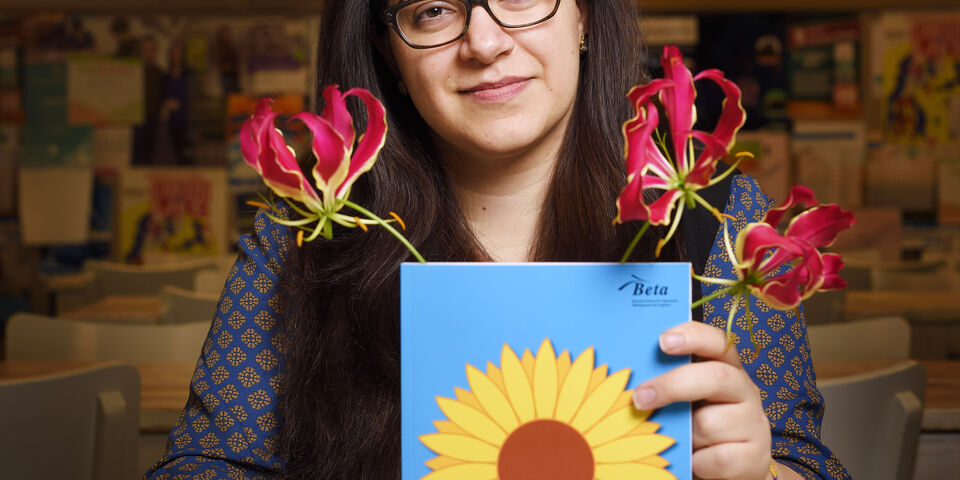Home Stretch | Greener flower transport
In the transport of flowers and other perishable products, speed often has priority over transport costs and the environment. The sophisticated logistical models of the Iranian PhD candidate Maryam SteadieSeifi make an environmentally friendlier solution possible by helping to fit barges and trains in with existing air and road traffic, without affecting the profit.
The Netherlands is the greatest exporter of plants and flowers in Europe. While a portion of this export is grown in the Netherlands itself, there are many horticultural products that are flown in from other continents to be sold at one of the six Dutch auctions, says Maryam SteadieSeifi. “Within Europe plants and flowers are subsequently distributed by trucks, or transported to other continents by airplane.”
Speed is the keyword for these perishable products: flowers, for instance, decrease in value by some 15% every day, the Iranian explains. “Transport by airplanes and trucks is simply the fastest mode, which is why these means of transport are decided on almost exclusively, notwithstanding the fact that they are relatively expensive and detrimental to the environment.”
The expensive dragging of flowers
everywhere seems to have had its day
Fortunately all this expensive transportation of cooled flowers to auctions seems to have had its day. The future appears to lie with some form of ‘virtual’ auctions via the Internet, whereby the products are inspected and sold at the geographical origin. As a result, a batch of flowers from Peru does not always need to be flown to Aalsmeer first, and then back across the Atlantic Ocean to a buyer in the United States. The DaVinc3i project of logistics consortium Dinalog has to prepare the sector for that new situation, and SteadieSeifi has used the flower transport as a ‘case study’ for her logistical models.
“In principle, my models can be applied to each transportation of perishable products by multiple means of transport”, the PhD candidate explains. “Yet it is difficult to draw general conclusions, because optimal solutions are strongly dependent on the details of the situation.” The shelf life of the products, for example, and the circumstances under which they can be transported, make a big difference.
More can be said about the crates, pallets and containers (the loading units) in which the products are transported, and which need to be returned after delivery. “At present they must be returned as soon as possible to the six auction locations. However, it turns out to be favorable to build one central warehouse for this in the Netherlands.” SteadieSeifi thinks that all parties involved within the sector can profit from more cooperation anyway. Instead of carrying the empty loading units back by means of trucks, a choice can be made for much larger, joint transports by trains and barges. “That is much cheaper, and already quite customary in other sectors.”
SteadieSeifi hopes that she will be allowed to use her expertise in the Dutch business community after obtaining her PhD. “The Netherlands is important in the field of transport and logistics; that was precisely why I decided on the Netherlands to obtain my PhD. And I have come to appreciate this country. Meanwhile I am very busy following a Dutch course, for now the time has come to really get integrated.”


Discussion